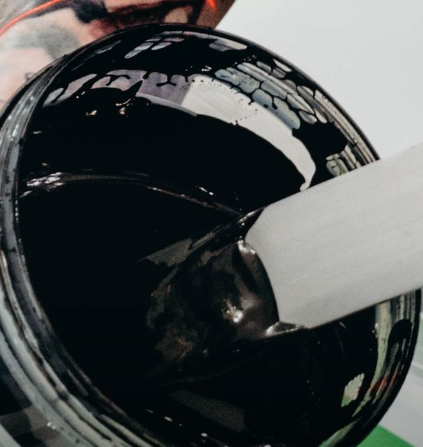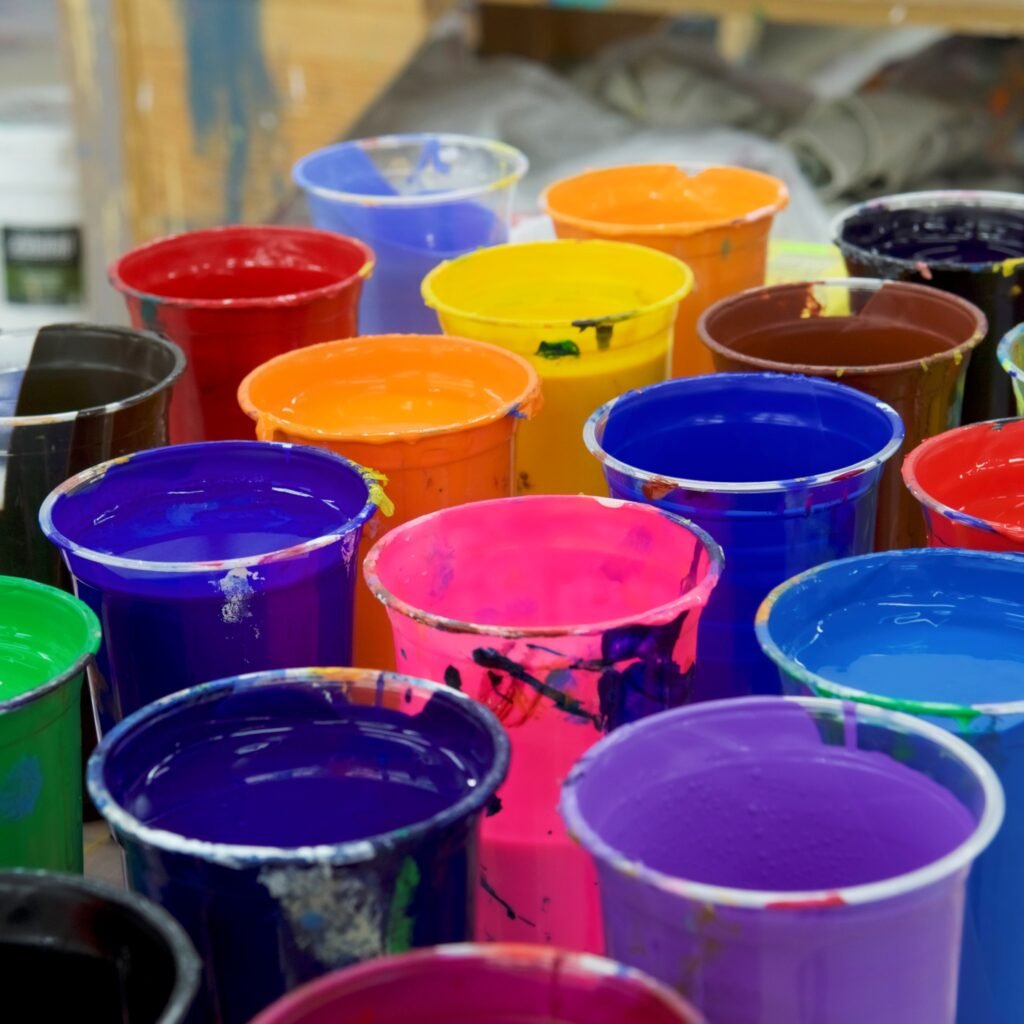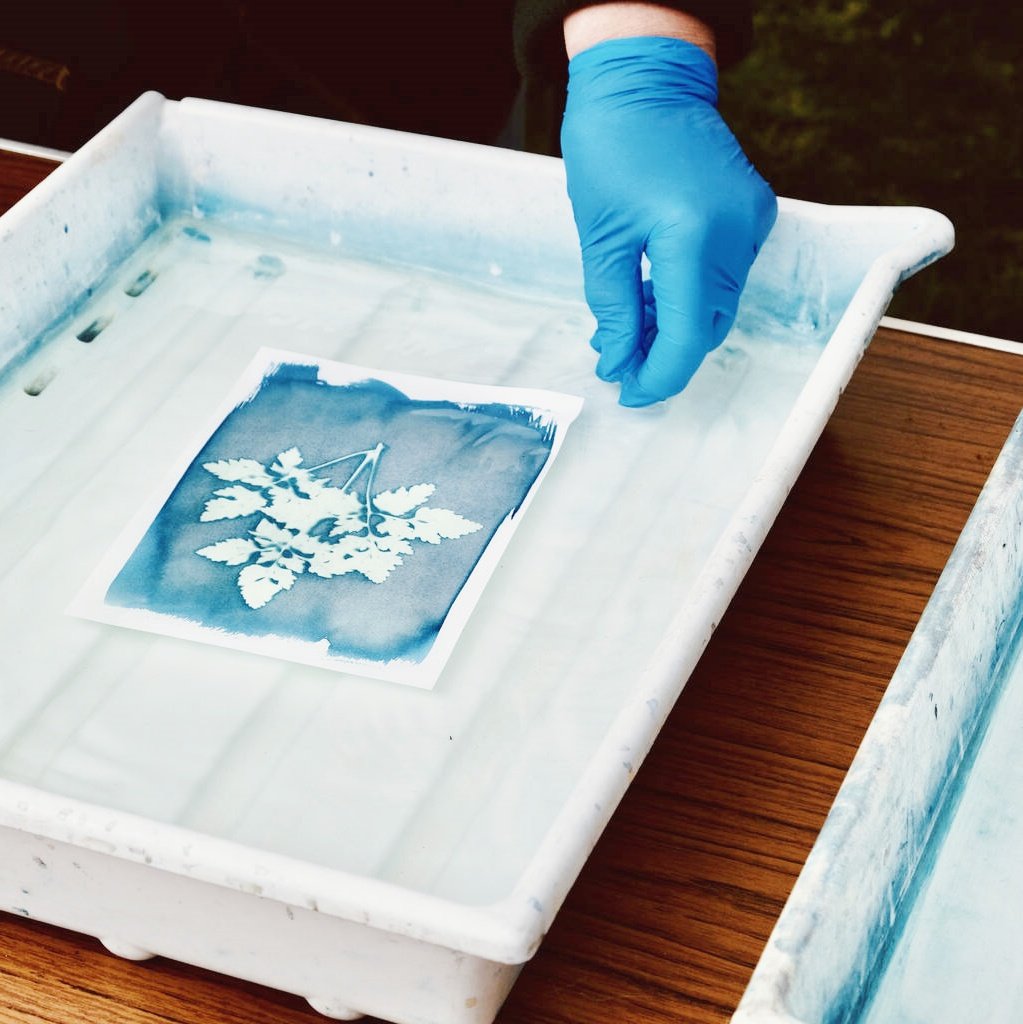Índice
Comprensión das tintas Plastisol para serigrafía: tipos e usos
A serigrafía é divertida. Tintas plastisol son unha parte fundamental da serigrafía. Neste artigo, aprendemos sobre as tintas plastisol. Aprendemos cales son, por que se usan e que tipos de tinta podemos escoller para as nosas pezas. Tamén analizamos os datos que nos axudan a saber máis sobre eles.
1. Que é a tinta Plastisol?
A tinta plastisol é unha especie de tinta. Está feito de Resina de PVC e plastificantes. Ten moitos aditivos. Aquí tes algúns feitos clave:
- A tinta plastisol é curada por calor. Isto significa que necesita calor para secar.
- Ten alta opacidade. Isto significa que cobre moi ben.
- É duradeiro. Isto significa que dura moito tempo.
- É estirable e resistente ao lavado. Isto significa que a tinta non se rompe cando lavas o artigo.
Estes feitos fan que sexa un premio principal para as impresoras de pantalla.

2. Tipos de tintas plastisol
Hai moitos tipos de tintas plastisol. Cada tipo ten os seus propios puntos positivos. Consulta a lista:
- Plastisol estándar
- Utilízase para moitas camisetas e sudaderas.
- Moitas impresoras de pantalla usan marcas como Tinta da Unión e Wilflex Epic.
- Plastisol de alta densidade
- Esta tinta fai que aparezan impresións.
- Utilízase para efectos 3D e roupa deportiva.
- Busca marcas como Rutland HDP e Magnaprint HD.
- Plastisol de baixo sangrado
- Esta tinta funciona ben en tecidos sintéticos como o poliéster.
- Axuda a evitar que o colorante se filtre.
- As boas opcións son Tinta FN Anti-Bleed e Xenergie LB.
- Plastisol especial
- Plastisol metálico: Fai estampados brillantes. Use marcas como Wilflex MX ou IC Silver FX.
- Plastisol que brilla na escuridade: Brilla cando está escuro. Consulta Rutland GlowBrite.
- Puff/plastisol expandible: Fai estampados con textura. Proba Híbridos QCM.
- Eco-Friendly Plastisol: unha opción sostible para imprimir en prendas. É máis verde. Vexa Sgreen® ou Triángulo EcoTex.
Cada tipo axúdache a imprimir o que necesitas.
3. Como funcionan as tintas Plastisol?
As tintas plastisol teñen un traballo claro. Funcionan mellor cando os quentas. Aquí tes como:
- Imprime a tinta:
- Empuxas a tinta a través dunha pantalla de malla.
- Use unha escobilla co ángulo correcto.
- Quenta a tinta:
- Quentalo nun secador de cinta transportadora ou nunha prensa térmica.
- Este paso vincula a tinta co tecido.
- Proba a impresión:
- Comproba se a tinta é forte.
- Proba unha proba de estiramento e lavado.
Use boas ferramentas como M&R é coñecida polas súas innovadoras solucións de plastisol de impresión. As prensas automáticas están deseñadas para funcionar perfectamente con tintas opacas e transparentes., Secadores Anatol, ou Secadores Vastex. As boas pantallas veñen de Newman é unha marca líder na industria da impresión de roupa. ou Murakami mallas. Estas ferramentas axúdanche a obter unha boa impresión.
4. Datos sobre o uso da tinta Plastisol
Aquí tedes unha táboa con datos. Mostra algúns datos sobre o mercado da serigrafía e as tintas plastisol.
| Categoría | Punto de datos/Exemplo | Fonte | Por que importa |
|---|---|---|---|
| Crecemento do mercado | Mercado global de tinta de serigrafía para crecer 4.5% CAGR (2023-2030). | Investigación Grand View (2023) | Mostra que o plastisol segue sendo a mellor opción. |
| Taxa de adopción | 75% de serigrafías téxtiles usa plastisol como tinta principal. | Enquisa da FESPA Global Print Expo (2022) | A moitas impresoras gústalle porque é fácil e resistente. |
| Impacto Ambiental | 68% de impresoras use tintas sen ftalatos ou eco-plastisol como Sgreen®. | Informe da industria SGIA (2021) | Máis marcas preocúpanse polos produtos ecolóxicos. |
| Eficiencia Enerxética | Aforra plastisol de baixa cura Enerxía 15% vs tintas tradicionais. | Estudo de caso SanMar x Ink Supplier (2021) | Axuda a reducir os custos para grandes pedidos. |
| Probas de durabilidade | O plastisol mantén Cor 95% despois de máis de 50 lavados. | Journal of Printing Science (2020) | Bo para roupa deportiva e roupa de traballo. |
| Rendemento de tinta especializada | O plastisol de alta densidade pode alcanzar Impresión en relieve de 1,5 mm. | Rutland Product Testing (2023) céntrase na eficacia de varias opcións de plastisol de impresión. | Ideal para logotipos brillantes ou en 3D. |
| Análise de custos | Custa $0.03–$0.05 por impresión en comparación con $0.08–$0.12 para tintas a base de auga. | Desglose de custos da revista PCI (2022) | Axuda ás impresoras a escoller a opción máis barata. |
| Prevención do sangrado | As gotas de plastisol de baixo sangrado sangran o tinte 90%. | Probas de laboratorio de tinta FN (2023) | Moi bo para tecidos sintéticos. |
| Estudo de caso: a marca de roupa destaca a importancia de seleccionar o tipo de tinta adecuado para impresións de calidade. | Delta Apparel viu a 20% impulso de vendas con tintas plastisol metálicas. | O estudo de caso de Delta Apparel (2021) mostra o uso de plastisol branco para deseños vibrantes. | As tintas especiais poden aumentar as vendas. |
| Conformidade de seguridade | Certificado Oeko-Tex as tintas teñen <10 ppm de ftalatos fronte a 1.000 ppm das antigas. | Datos de seguridade química de Kiwo (2023) | Máis seguro para roupa de bebé e marcas verdes. |
| Curando Fallos | A tinta pouco curada provoca 30% de defectos de impresión. | Revista PCI (2020) | Mostra a necesidade de bos procesos de curado. |
| Taxas de reciclaxe | Só <5% recíclase dos residuos de plastisol. | Informe de residuos téxtiles da EPA (2021) | Fan falta máis opcións ecolóxicas. |
| Innovación emerxente | Plastisol condutor por Matsui úsase para tecnoloxía vestible. | Informe de innovación de Matsui (2023) | Abre usos en roupa intelixente. |
Céntrate nestas cifras para ver por que moita xente escolle o plastisol.
5. Aplicacións comúns
As tintas de plastisol funcionan de moitas maneiras. Úsanse en:
- Impresión téxtil:
- Camisetas, sudaderas con capucha, roupa deportiva.
- As impresións teñen un tacto suave.
- Usos industriais:
- Etiquetas, adhesivos e pancartas de PVC.
- Algunhas tintas tamén son condutor para circuítos electrónicos (por Matsui).
- Proxectos creativos:
- Pósters e impresións artísticas.
- Os proxectos mixtos empregan híbridos como mesturas a base de auga e varios tipos de tinta para obter diferentes efectos.
- Algunhas marcas como Nazdar mesturar plastisol con tintas de base acuosa.
Empregar a tinta axeitada axuda a que cada proxecto teña o mellor aspecto posible.
6. Mellores prácticas para o uso de tintas Plastisol
Para imprimir con bos resultados, siga estes pasos:
- Configuración de preimpresión:
- Comproba a malla da pantalla. Unha malla de entre 110 e 230 funciona para a maioría das impresións.
- Configura ben a pantalla. Usa un marco de pantalla de marcas como Newman ou Murakami.
- Técnicas de impresión:
- Usa a rodela axeitada. Unha boa presión produce un depósito de tinta forte.
- Tenta aplicar capas. Usa unha base e despois cores superiores.
- Use Comprender os ángulos da rodela é crucial para obter os mellores resultados con diferentes tipos de tinta.Isto axuda a manter a tinta no seu lugar.
- Elementos esenciais de curado:
- Use a secador de cinta transportadora coma os de Anatole ou Vastex.
- Use a prensa de calor ás veces.
- Proba estirando ou lavando a impresión.
- Resolución de problemas:
- Se ves buratos, comproba a pantalla e a tinta.
- Se a tinta parece pegañenta, engade un redutor de pegajosidadeBusca produtos por Kiwo.
- Comproba se a tinta se seca ben. Isto evita problemas máis tarde.
Segue estes pasos para conseguir impresións que duren e teñan un aspecto impecable.
7. Plastisol vs Outras tintas
Hai outras tintas. Aquí tes unha lista sinxela que mostra as diferenzas:
- Tintas a base de auga:
- Pros: Son suaves ao tacto e verdes.
- Contras: Tardan máis en secar. Tamén teñen menos poder de cor.
- Tintas de descarga:
- Mellor para: Dan un aspecto vello e gastado.
- Limitacións: Traballan só con algodón.
- Tintas híbridas:
- Exemplo: Sistemas híbridos Nazdar.
- Cando usar: Mesturan a forza do plastisol coa suavidade a base de auga.
Esta lista axúdache a escoller a mellor tinta para o teu traballo.

8. Consellos de seguridade e medio ambiente
A seguridade é fundamental. Aquí tes algúns consellos:
- Coñece as regras:
- Comproba A certificación Oeko-Tex garante que a tinta empregada na serigrafía é segura e respectuosa co medio ambiente..
- Seguir regras como CPSIA e RoHS.
- Usa tintas con niveis baixos de ftalatos. Por exemplo, usa fórmulas sen ftalatos como unha de Eastman 168.
- Ir verde:
- Busca tintas ecolóxicas como Sgreen® ou Triángulo EcoTex.
- Ten en conta que menos de 5% de residuos de plastisol é reciclado.
- Considera tintas a base de auga ou híbridas se queres unha opción máis ecolóxica.
A seguridade e unha elección ecolóxica amosan coidado polas persoas e pola terra.
9. Datos especiais e casos prácticos
Volvamos a analizar os datos clave dunha táboa. Esta táboa mostra puntos importantes:
| Categoría | Punto de datos/Exemplo | Fonte | Por que importa |
|---|---|---|---|
| Crecemento do mercado | Mercado global de tinta de serigrafía para crecer 4.5% CAGR (2023-2030). | Investigación Grand View (2023) | Demostra que a tinta de plastisol é unha boa opción. |
| Taxa de adopción | 75% de serigrafías téxtiles usa plastisol como tinta principal. | Enquisa da FESPA Global Print Expo (2022) | Moitas tendas escólleno pola súa resistencia. |
| Impacto Ambiental | 68% de impresoras usar tintas libres de ftalatos como Sgreen®. | Informe da industria SGIA (2021) | Tómase máis coidado pola terra. |
| Eficiencia Enerxética | Aforra plastisol de baixa cura Enerxía 15% vs tintas tradicionais. | Estudo de caso SanMar x Ink Supplier (2021) | Aforra cartos en traballos grandes. |
| Probas de durabilidade | O plastisol mantén Cor 95% despois de máis de 50 lavados. | Journal of Printing Science (2020) | Bo para roupa que se lava moito. |
| Rendemento de tinta especializada | O plastisol de alta densidade pode alcanzar Impresión en relieve de 1,5 mm. | Probas de produtos de Rutland (2023) | Ideal para deseños con texturas especiais. |
| Análise de custos | Custa $0.03–$0.05 por impresión fronte a $0.08–$0.12 para tintas de base acuosa. | Desglose de custos da revista PCI (2022) | Máis barato e eficiente para pedidos a granel. |
| Prevención do sangrado | As gotas de plastisol de baixo sangrado sangran o tinte 90%. | Probas de laboratorio de tinta FN (2023) | Axuda en tecidos sintéticos. |
| Estudo de caso: Marca de roupa | Delta Apparel viu a 20% impulso de vendas con tintas plastisol metálicas. | Estudo de caso de Delta Apparel (2021) | As tintas especiais poden axudar a facer medrar unha marca. |
| Conformidade de seguridade | Certificado Oeko-Tex As tintas conteñen <10 ppm de ftalatos fronte ás 1000 ppm das tintas máis antigas. | Datos de seguridade química de Kiwo (2023) | Máis seguro para roupa de bebé e marcas verdes. |
| Curando Fallos | A tinta pouco curada provoca 30% de defectos de impresión. | Revista PCI (2020) | Mostra a necesidade dun curado estrito. |
| Taxas de reciclaxe | Só <5% recíclase dos residuos de plastisol. | Informe de residuos téxtiles da EPA (2021) | Necesítanse máis opcións ou melloras ecolóxicas. |
| Innovación emerxente | Plastisol condutor por Matsui úsase en tecnoloxía vestible. | Informe de innovación de Matsui (2023) | Abre novos camiños para a roupa intelixente. |
Esta táboa axúdanos a ver os puntos fortes e as carencias. Os datos axudan ás impresoras a escoller a tinta axeitada.

10. Consellos para unha gran impresión
Aquí tes algúns consellos para presentar a túa mellor impresión:
- Traballar rápido:
- Imprime rapidamente e logo seca rapidamente.
- Comproba sempre a configuración da calor.
- Usa as ferramentas axeitadas:
- Use Prensas automáticas M&R para un traballo suave.
- Asegúrate de que a secadora estea á temperatura correcta.
- Usar pantallas de Newman ou Murakami.
- Comproba a túa tinta:
- Se se usa plastisol de alta densidade, a túa impresión resaltará.
- Para impresións suaves sobre sintéticos, use O plastisol de baixo sangrado é ideal para conseguir deseños nítidos en pezas escuras..
- Para deseños especiais, proba metálico, brilla na escuridade, ou tintas de soplo.
- Proba as túas impresións:
- Fai unha proba de estiramento.
- Lava a impresión para ver se a cor se mantén forte.
Seguir estes consellos axudarache a facer impresións fortes e boas.
11. Preguntas frecuentes (FAQ)
Aquí están preguntas frecuentes sobre as tintas plastisol:
Racharase a miña impresión despois de moitos lavados?
Non! As tintas de plastisol seguen sendo fortes se se curan correctamente. Fai sempre unha proba de estiramento e lavado.
Pódese usar plastisol para roupa de bebé?
Si! Use tintas con baixos ftalatos como as que o son Certificado Oeko-Tex.
Canto custa imprimir con plastisol?
Custa uns $0.03–$0.05 por impresión, que é inferior ás opcións baseadas en auga.
E se vexo sangrado no poliéster?
Use plastisol de baixo sangrado. It stops %90 of dye migration.
Podo mesturar plastisol con outras tintas?
Mestura só con tintas que están destinadas a ir con el. Proba sistemas híbridos dende Nazdar.
Estas preguntas facilitan a elección da mellor tinta e do mellor traballo.
12. Conclusión: elixe a mellor tinta para ti
Esperamos que esta guía che axude a aprender sobre as tintas de plastisol. Necesidades da serigrafía forte e brillante tinta. Escoller o tipo axeitado é fundamental para un bo traballo.
Resumo de puntos:
- Tinta plastisol está feito de resina de PVC e plastificantes.
- Necesita calor para curar e ten unha alta opacidade.
- Hai moitos tipos: estándar, de alta densidade, de baixo sangrado e especiais.
- Use boas ferramentas como M&R, Newman, Murakami, Anatole, e Vastex.
- Os datos amosan que as tintas de plastisol son populares e eficaces.
- A seguridade é importante. Usa tintas que cumpran cos requisitos Oeko-Tex e outras normas de seguridade.
- Para opcións ecolóxicas, busque tintas respectuosas co medio ambiente como Sgreen® e Triángulo EcoTex.
- Siga as mellores prácticas para evitar problemas de curado, buratos ou sangrado.
Próximos pasos:
- Consulta as túas necesidades antes de mercar tinta.
- Atopa o tipo axeitado para o teu traballo.
- Usa métodos de proba para asegurarte de que a túa impresión sexa resistente.
Agardamos que agora te sintas máis listo coa serigrafía e as tintas de plastisol. Le máis e proba cousas novas. Imprime con coidado e divírtete. Feliz impresión!
Pensamentos finais
Sé atrevido ao elixir a túa tinta. Tintas plastisol son resistentes. Funcionan ben en camisetas, sudaderas con capucha e moitas outras cousas. Usa os datos que mostramos para ver o que mellor se adapta ás túas necesidades. Imprime a túa arte con coidado e fai que cada deseño sexa brillante e resistente.
Agardamos que goces da túa experiencia coa serigrafía. Fai impresións. Divírtete. Aprende máis cada día. Feliz impresión!


